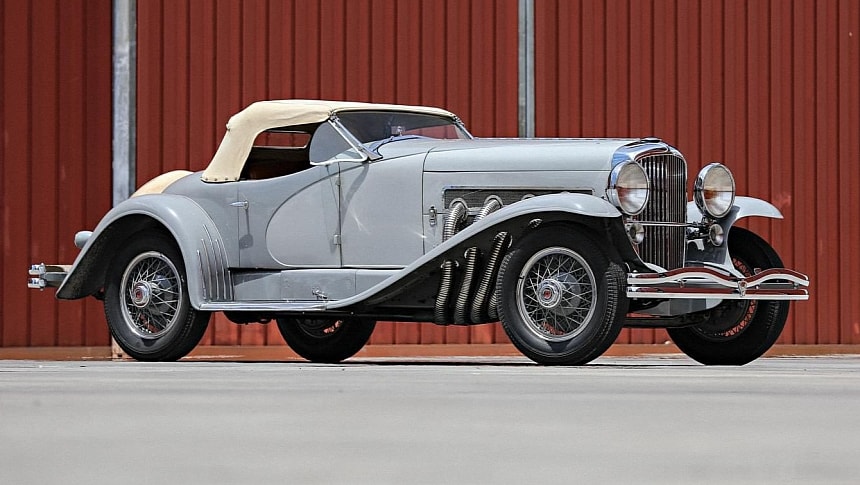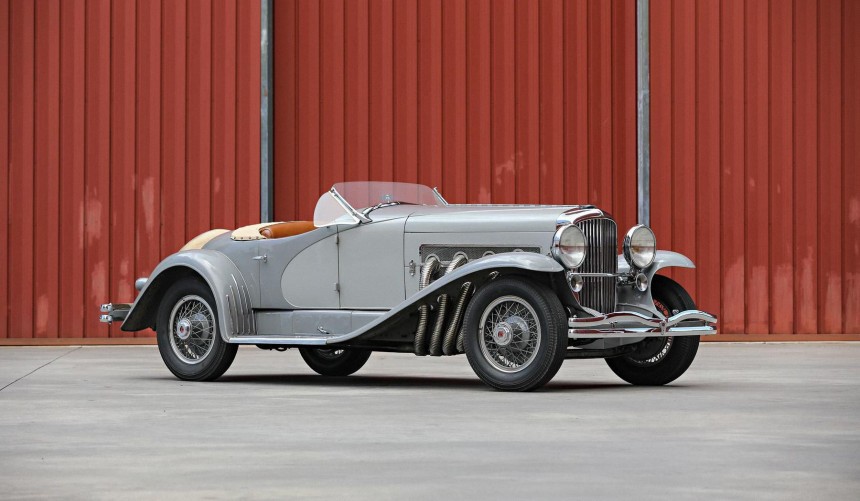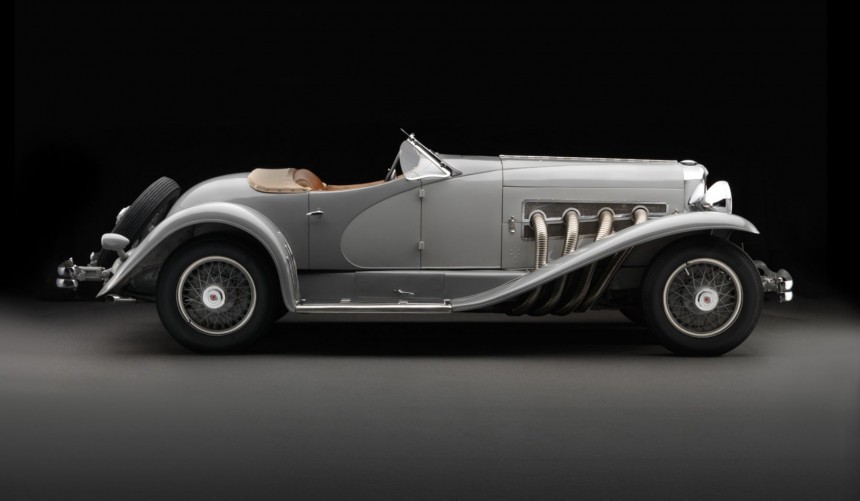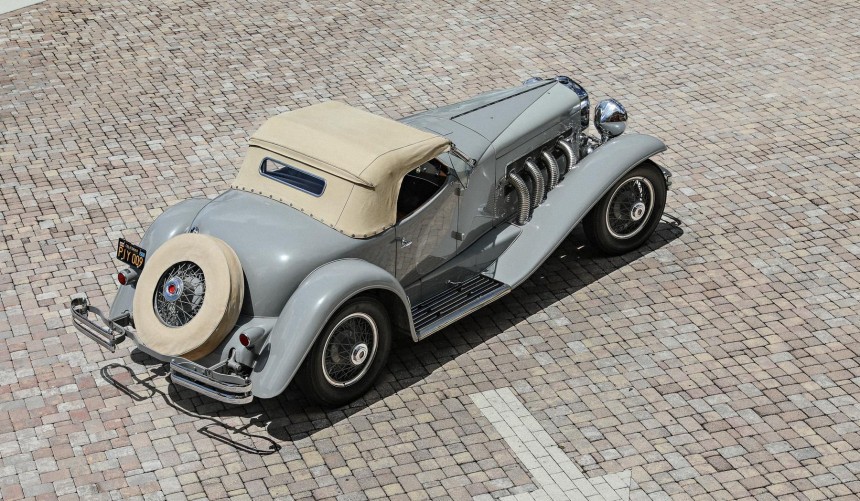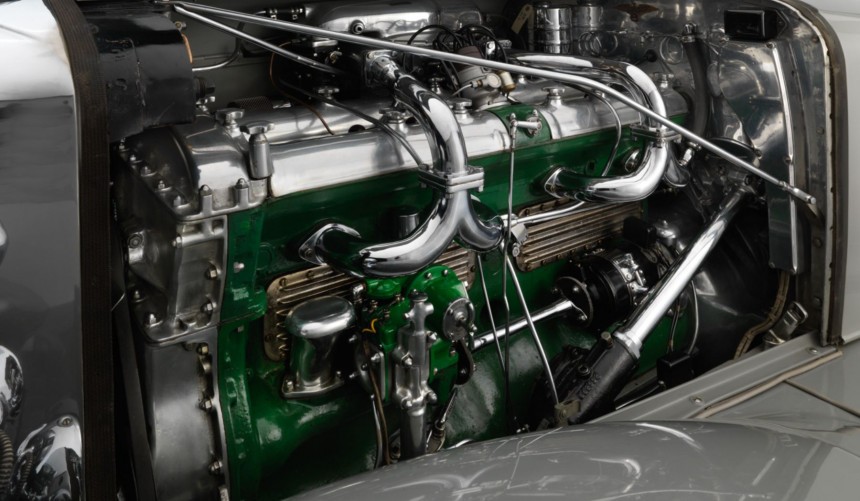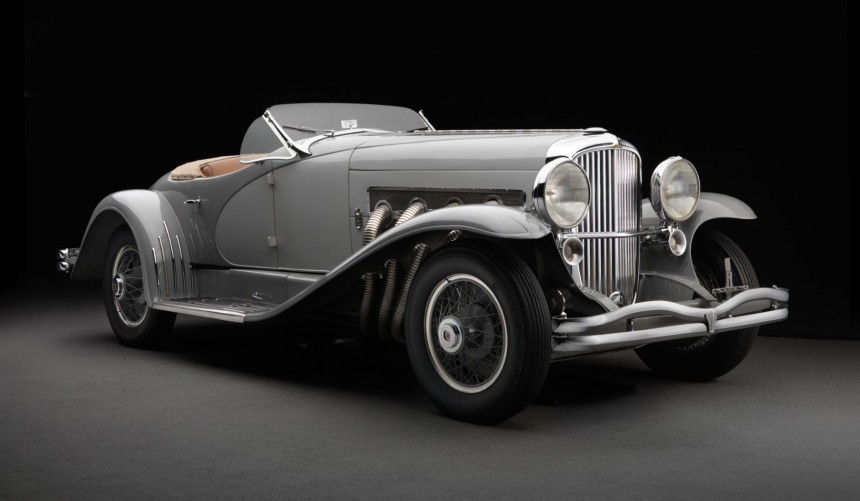Produced in just two examples, the SSJ is still a mind-blowing combination of elegance and performance nearly ninety years after it was unleashed on public roads.
These days, if you ask enthusiasts with a soft spot for American cars which defunct brand they would like to see making a comeback, you'll get answers like Pontiac, Plymouth, or Oldsmobile, but surprisingly few will mention Duesenberg.
Not to take anything away from the aforementioned brands, which produced some legendary vehicles, particularly during the golden age of muscle, but back in its heyday, Duesenberg built exquisite cars that were not just extremely sought-after in the US but the entire world.
The company's story started in 1913 when brothers Fred and August "Augie" Duesenberg founded the Duesenberg Motors Company in Saint Paul, Minnesota.
Though it developed several vehicles (mainly race cars) in the coming years, Duesenberg's rise to fame was cut short by the First World War, a period during which the brothers relocated to New Jersey and started building aircraft engines.
After the war ended, Frank and Augie sold their Saint Paul factories and moved to Indianapolis, Indiana, where they established a new corporate entity called Duesenberg Automobile & Motors Company (later, Duesenberg, Inc.).
The brand only survived for seventeen years in its final, most renowned form.
However, during that short period, Duesenberg built Indy and European Grand Prix-winning race cars, as well as some of the most elegant and technically advanced road cars in the world, becoming one of the most illustrious carmakers in the history of the American automotive industry.
Arguably, the most iconic Duesenberg series produced during those Indiana years was the Model J.
First introduced in 1928, the J was developed to rival the world's most luxurious and powerful cars, from the likes of Rolls-Royce or Hispano-Suiza.
As part of the series, Duesenberg developed many variations with coachbuilt bodies atop standard, optional long or short wheelbase frames.
Power came from the company's Indy-winning DOHC straight-eight engine, which, depending on the model, was either naturally aspirated or supercharged.
While virtually all Duesenberg Js have become icons of the classic era, the SSJ remains the most outstanding member of the series for its unrivaled combination of luxury and performance.
By the mid-1930s, Duesenberg was struggling to navigate the murky financial waters of the Great Depression, and its downfall seemed inevitable.
In a last-ditch effort to revitalize the brand's image, hte company developed two short-wheelbase Js equipped with beefed-up supercharged engines in 1935 and 1936.
The first car was built for Hollywood superstar Gary Cooper, who wanted the ultimate road-legal Duesy.
Legend has it that Cooper, a huge car nut and speed addict, grew tired of losing stop-light battles against comedian Groucho Marx and his modified Mercedes-Benz SSK, which at the time was allegedly the fastest car in Hollywood.
Augie Duesenberg, the company's engineering mastermind, who took over as vice president after the death of his brother in 1932, was quick to oblige, and got to work.
The SSJ was built on a shortened 125-inch (3,200 mm) frame equipped with a top-of-the-line suspension system comprised of a solid front axle and a live one for the rear, as well as a potent braking system with large hydraulically-actuated drums on all four corners.
Atop the shortened frame, the SJJ received a short and sporty roadster body developed by LaGrande, the company's in-house coachbuilder.
It featured a long hood, a wide grille, and flowing fenders, which, in typical Duesenberg fashion, resulted in a gorgeous structure that oozed luxury from every angle.
Even today, the SSJ is as breathtaking as it was in 1935 and is considered a masterpiece of the classic era.
Arguably more spectacular than the state-of-the-art frame and gorgeous body was the SSJ's beefed-up Indy-winning, DOHC, four-valve-per-cylinder straight-eight.
In standard centrifugal supercharged form, the 420-ci (6.9-liter) lump of cast iron could make from 265 to 320 hp. That was much more than the advanced engines from rivaling brands, such as Cadillac, whose V16 could only muster 185 hp.
Nevertheless, Augie Duesenberg wanted to make sure that Gary Cooper's SSJ was the fastest road car in Hollywood, and one of the fastest in the world.
Therefore, he made several modifications, including an upgraded centrifugal supercharger and a new "ram's head" dual-carburetor intake manifold.
The result of those modifications was an output of 400 hp (gross), an outstanding figure for 1935. The SSJ's unit became the most powerful engine ever fitted into an American road car, a feat equaled by Mercury's Super Marauder V8 in 1958 and exceeded as late as the 1960s.
Thanks to that amazing engine, the 5,000-pound (2,268 kg) SSJ was allegedly capable of sprinting from 0 to 60 mph (97 kph) in the high-eight to low-nine-second range. Furthermore, the car could reach a top speed of over 130 mph (209 kph).
Those performance figures, which were still impressive decades later, made the SSJ the ultimate road-going Duesy and a thoroughbred supercar, many years before the term was used to describe modern high-performance sports cars.
Gary Cooper got his wish, and his SSJ proved much faster than Groucho Marx's modified SSK. The only person in Holywood who could keep up was fellow big-screen legend Clark Gable, who received the second SSJ in 1936.
Though Duesenberg wanted to build more examples, the company went bankrupt in 1937, so only two SSJs were ever produced.
Though they have been repainted and switched owners multiple times, both cars have survived in highly original form. The second is in the custody of a private collector while Cooper's former car, the first-ever SSJ sold at Gooding & Company's Pebble Beach auction in 2018 for a whopping $22 million, setting a new record for the most expensive American car ever sold at a public auction.
You can take a virtual tour of the record-setting car and see how it performs on public roads in the YouTube video below by Gooding & Company.
Not to take anything away from the aforementioned brands, which produced some legendary vehicles, particularly during the golden age of muscle, but back in its heyday, Duesenberg built exquisite cars that were not just extremely sought-after in the US but the entire world.
The company's story started in 1913 when brothers Fred and August "Augie" Duesenberg founded the Duesenberg Motors Company in Saint Paul, Minnesota.
Though it developed several vehicles (mainly race cars) in the coming years, Duesenberg's rise to fame was cut short by the First World War, a period during which the brothers relocated to New Jersey and started building aircraft engines.
After the war ended, Frank and Augie sold their Saint Paul factories and moved to Indianapolis, Indiana, where they established a new corporate entity called Duesenberg Automobile & Motors Company (later, Duesenberg, Inc.).
The brand only survived for seventeen years in its final, most renowned form.
However, during that short period, Duesenberg built Indy and European Grand Prix-winning race cars, as well as some of the most elegant and technically advanced road cars in the world, becoming one of the most illustrious carmakers in the history of the American automotive industry.
From Model J to SSJ
First introduced in 1928, the J was developed to rival the world's most luxurious and powerful cars, from the likes of Rolls-Royce or Hispano-Suiza.
As part of the series, Duesenberg developed many variations with coachbuilt bodies atop standard, optional long or short wheelbase frames.
Power came from the company's Indy-winning DOHC straight-eight engine, which, depending on the model, was either naturally aspirated or supercharged.
While virtually all Duesenberg Js have become icons of the classic era, the SSJ remains the most outstanding member of the series for its unrivaled combination of luxury and performance.
Developed to beat the fastest car in Holywood
In a last-ditch effort to revitalize the brand's image, hte company developed two short-wheelbase Js equipped with beefed-up supercharged engines in 1935 and 1936.
The first car was built for Hollywood superstar Gary Cooper, who wanted the ultimate road-legal Duesy.
Legend has it that Cooper, a huge car nut and speed addict, grew tired of losing stop-light battles against comedian Groucho Marx and his modified Mercedes-Benz SSK, which at the time was allegedly the fastest car in Hollywood.
Augie Duesenberg, the company's engineering mastermind, who took over as vice president after the death of his brother in 1932, was quick to oblige, and got to work.
A masterpiece of the classic era
Atop the shortened frame, the SJJ received a short and sporty roadster body developed by LaGrande, the company's in-house coachbuilder.
It featured a long hood, a wide grille, and flowing fenders, which, in typical Duesenberg fashion, resulted in a gorgeous structure that oozed luxury from every angle.
Even today, the SSJ is as breathtaking as it was in 1935 and is considered a masterpiece of the classic era.
The first thoroughbred American supercar
In standard centrifugal supercharged form, the 420-ci (6.9-liter) lump of cast iron could make from 265 to 320 hp. That was much more than the advanced engines from rivaling brands, such as Cadillac, whose V16 could only muster 185 hp.
Nevertheless, Augie Duesenberg wanted to make sure that Gary Cooper's SSJ was the fastest road car in Hollywood, and one of the fastest in the world.
Therefore, he made several modifications, including an upgraded centrifugal supercharger and a new "ram's head" dual-carburetor intake manifold.
The result of those modifications was an output of 400 hp (gross), an outstanding figure for 1935. The SSJ's unit became the most powerful engine ever fitted into an American road car, a feat equaled by Mercury's Super Marauder V8 in 1958 and exceeded as late as the 1960s.
Thanks to that amazing engine, the 5,000-pound (2,268 kg) SSJ was allegedly capable of sprinting from 0 to 60 mph (97 kph) in the high-eight to low-nine-second range. Furthermore, the car could reach a top speed of over 130 mph (209 kph).
Those performance figures, which were still impressive decades later, made the SSJ the ultimate road-going Duesy and a thoroughbred supercar, many years before the term was used to describe modern high-performance sports cars.
The most expensive American car ever sold at a public auction
Though Duesenberg wanted to build more examples, the company went bankrupt in 1937, so only two SSJs were ever produced.
Though they have been repainted and switched owners multiple times, both cars have survived in highly original form. The second is in the custody of a private collector while Cooper's former car, the first-ever SSJ sold at Gooding & Company's Pebble Beach auction in 2018 for a whopping $22 million, setting a new record for the most expensive American car ever sold at a public auction.
You can take a virtual tour of the record-setting car and see how it performs on public roads in the YouTube video below by Gooding & Company.
